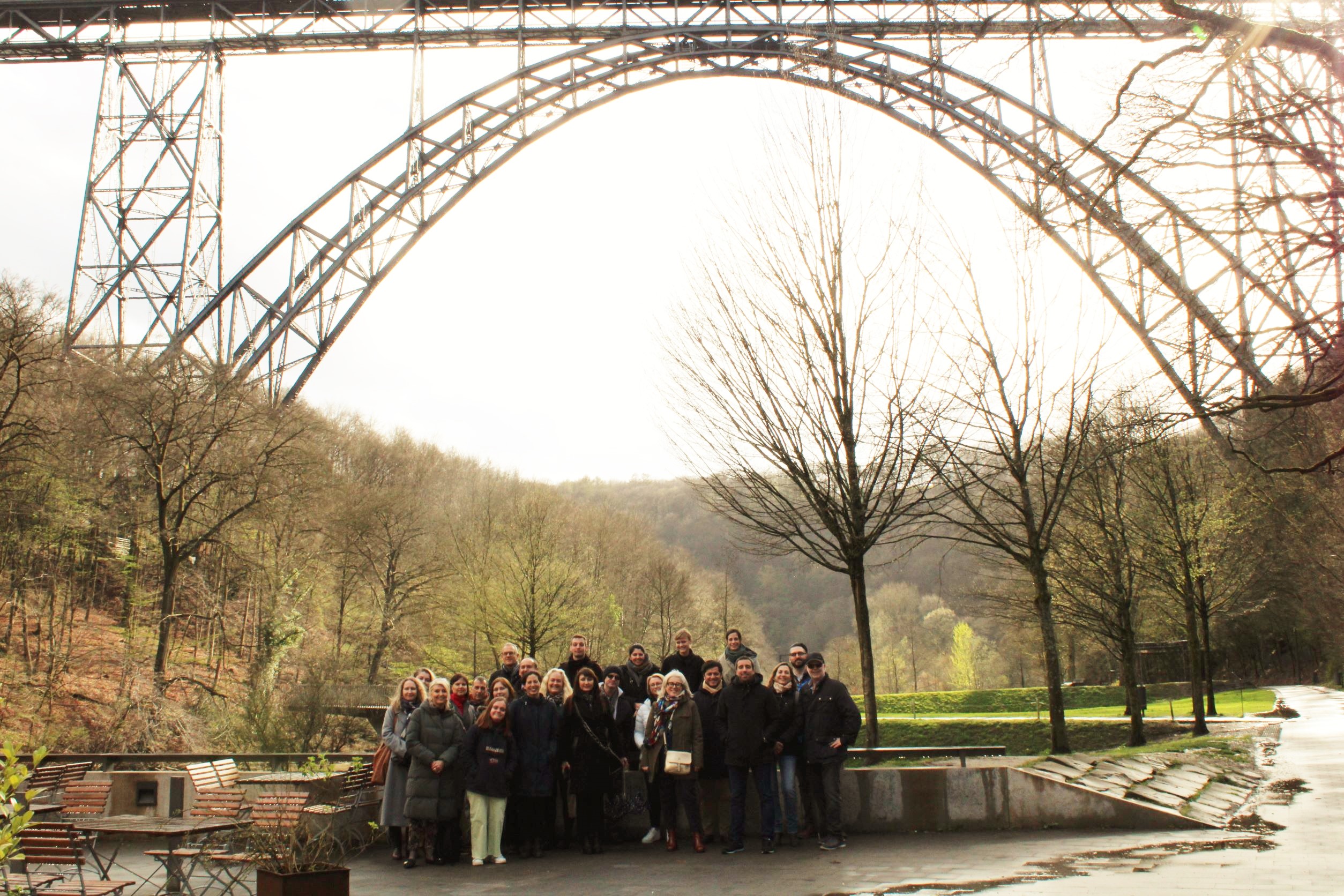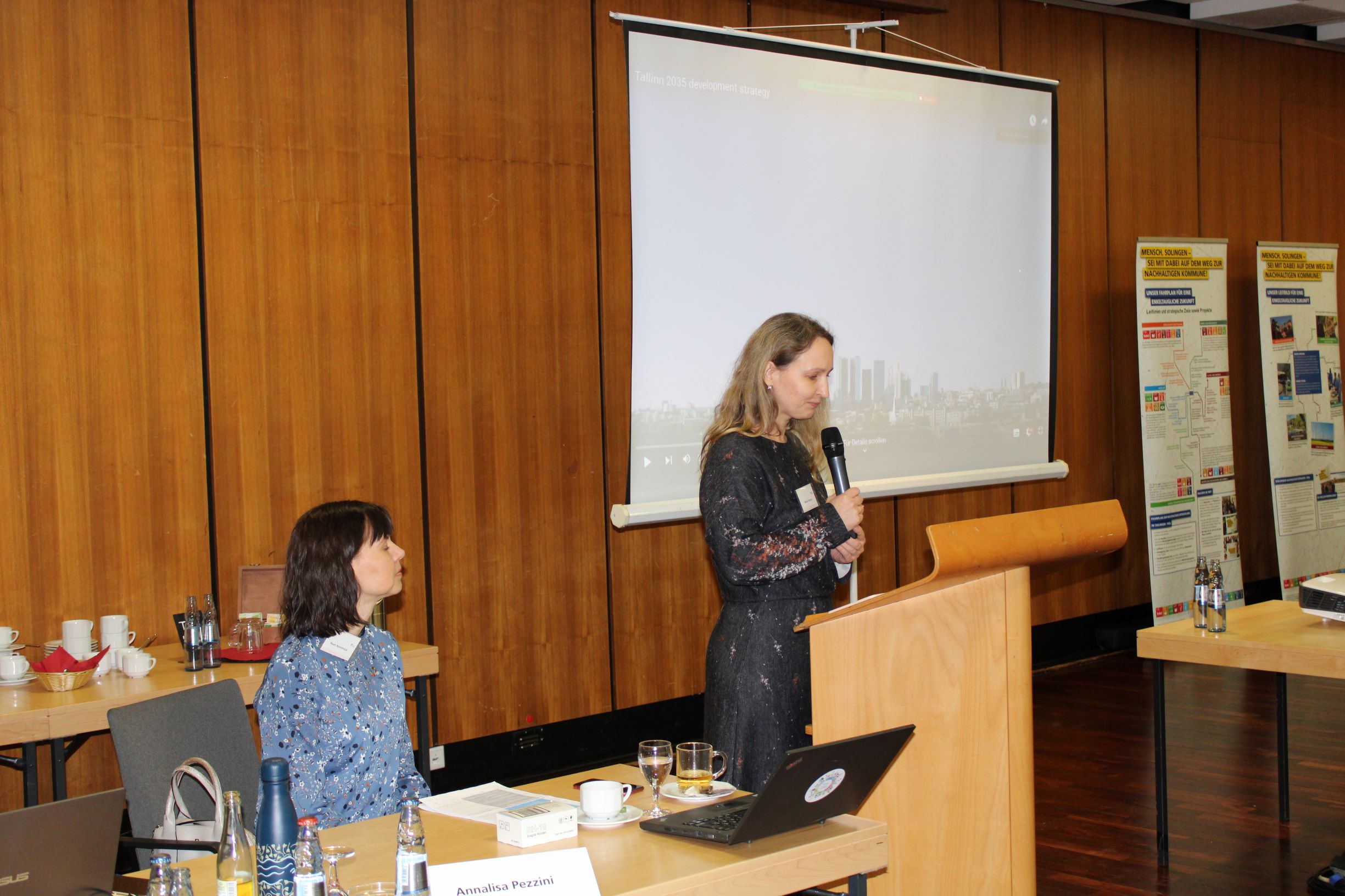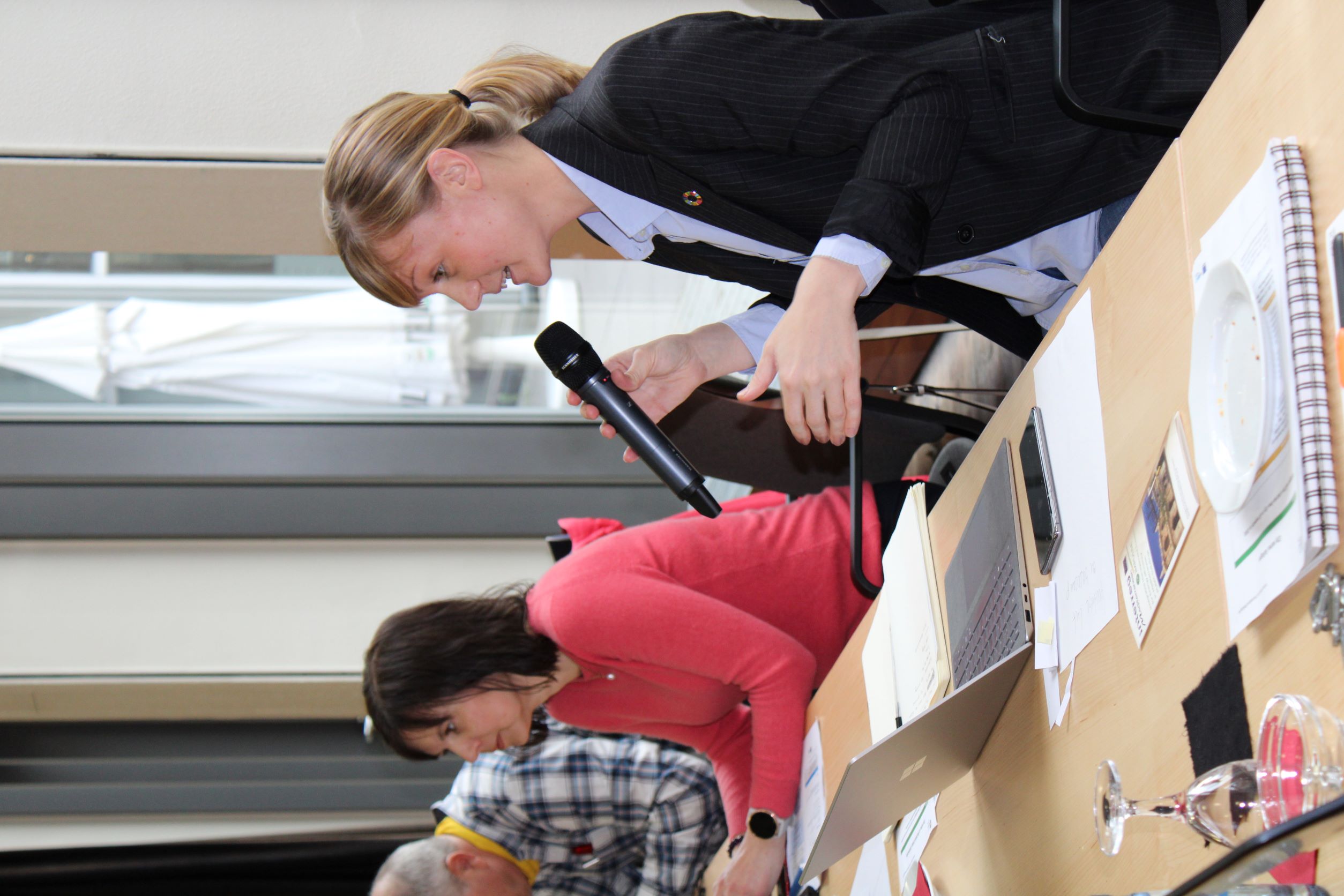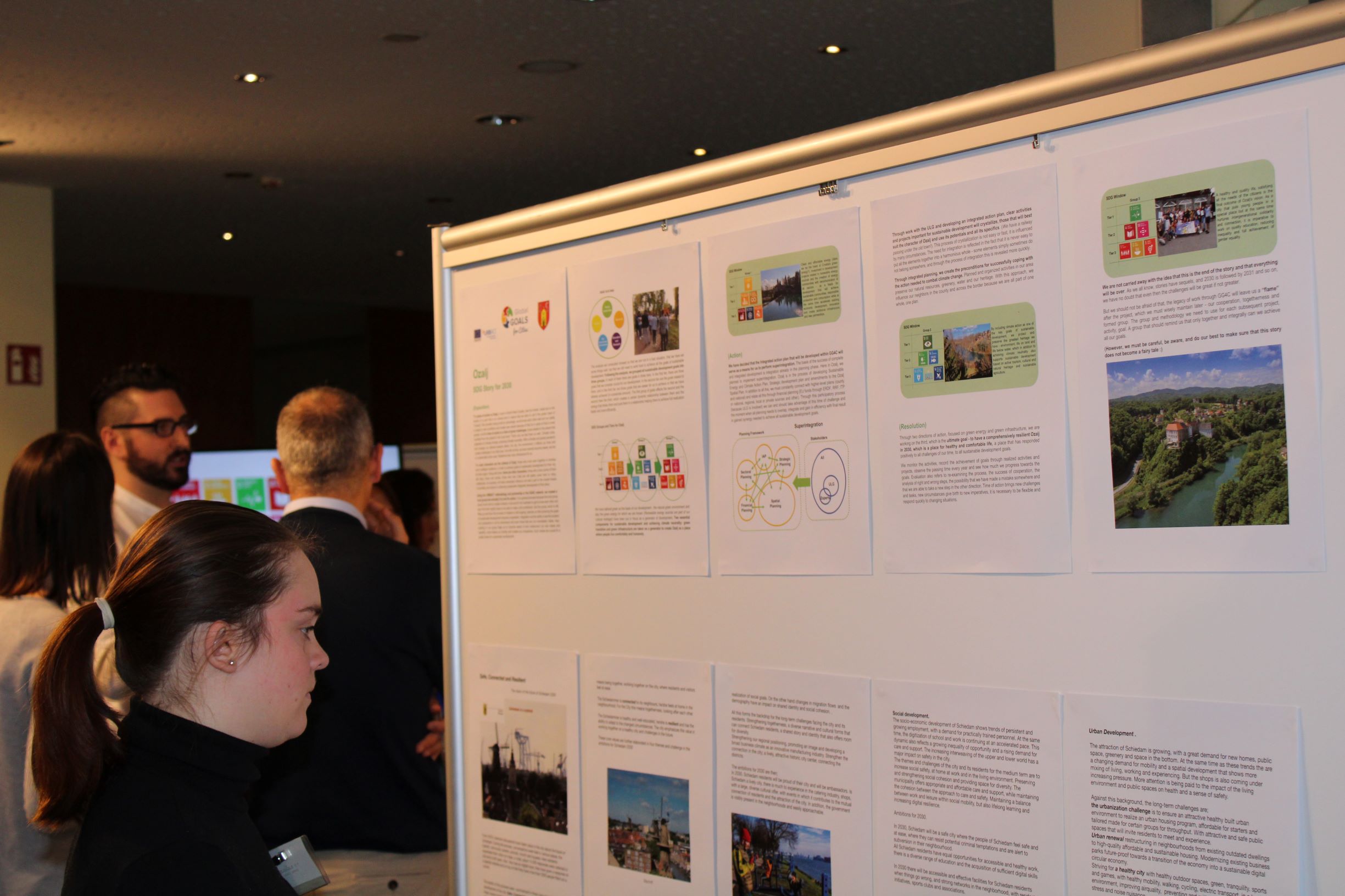Global Goals for Cities met for a transnational meeting
Edited on
21 April 2022The very first live meeting since starting with the network cities was held at the beginning of April in Germany and was hosted by local city Solingen, in addition by Heraklion, Greece and by lead partner Tallinn, Estonia.

The GG4C network period has multiple phases and as the network has completed the visioning phase, this meeting was dedicated to the next phase of action planning and implementation on governance, partnerships, and policy coherence levels.
Each host cities had a chance to perform in the meeting and completed their timeslot with very valuable lessons.

Solingen session - sharing on sustainability strategy and sustainability rating for city council resolutions
Martin Hückeler, local coordinator from Solingen, shared a presentation about Solingen’s Sustainability Strategy, which was adopted already in 2018. Sustainability is a high priority also for Tim Kurzbach, the Lord Mayor of Solingen, who made a personal appearance, and therefore the new staff unit "sustainability and climate protection" is reporting directly to him. It was explained how the strategy is being implemented through a multi-level governance and partnership framework, and how it is the responsibility for all departments to concretely contribute to the strategy implementation. 
Solingen has also introduced the sustainability rating, which focuses on the operational goals of the sustainability strategy. The rating is mandatory to be carried out for submissions to the council or its committees and is intended to make clear from the outset which promoting or inhibiting aspects in relation to the strategy and the SDGs are associated with the proposed decision.
Another aspect of Solingen’s strategy implementation showcased was the concept of “Places of Change”, to which, both private and public, actors can apply to showcase their work on sustainability. There are 25 such places in Solingen right now.
The representatives of Solingen also hosted a workshop, which was led by Ariane Bischoff, head of the sustainability unit.
Groups were formed and asked to reflect on experimental and laboratory approaches in different thematic areas – from transport to waste management – including initiatives like pop-up community gardens, waste reduction schemes, repair cafés, etc. The goal of the workshop was to be able to identify common areas of interest among partner cities, to experiment and learn from each other.
The outcomes were analyzed by the Solingen team and presented back to participants on the last day of the meeting. As a result – cities could sign up for ideas that they would be interested in co-experimenting together.
 Tallinn session - sharing on policy coherence and multi-level governance
Tallinn session - sharing on policy coherence and multi-level governance
Reet Nõmmoja and Maris Rahnu presented Tallinn’s work on sustainability through the Tallinn 2035 strategy. The strategy has been developed in coherence with the Estonia 2035 national strategy and relates to sustainability as a holistic framework but does not yet make explicit links to the SDGs. This is something that the team is addressing through the very same URBACT project.
In the governance of the strategy, efforts are made to link strategic, financial, and all spatial planning. There is a strategy coordination board with leaders from all fields of activity in the city of Tallinn. At the coordination board, information is being shared and possible collaborations identified. Many of Tallinn’s internal URBACT local group members come from the strategy coordination board. To work with external stakeholders, a development committee is being set up as an extension of the ULG.
The Tallinn team members also presented some good practice examples of participatory governance in Tallinn, including the Green Tiger Academy, participatory budget, as well as a new initiative called the Participation Hub, which aims to facilitate citizens' participation in the processes of urban design and thereby foster a meaningful discussion between the city, residents, urban professionals and developers. The innovative digital tools that will be set up in the space will allow complex urban planning processes to be addressed in a more inclusive and visually appealing way.
In the workshop part of Tallinn’s session, the participants were asked to identify the governance mechanisms in their cities to work with sustainability, the challenges encountered and possible solutions.
From the workshop results, it was clear that cities have different ways of coordinating sustainability work. For some, the starting point was to have annual reports on sustainability that brings different results across departments together. For others, these tasks are usually coordinated by one person/unit, and hence not contributing to holistic governance. Another group reported on sustainability as being an individual responsibility for the staff, while external partners help to engage with citizens, for example.
Heraklion session – SDG work and sharing on partnership with University 
Renia Drosou presented Heraklion’s work on sustainability, including its collaboration with the University of Crete on SDG localisation. The partnership with the University is funded by municipal budget and consist of, first, analysing and decomposing the city’s strategies in relation to the SDGs and, second, an activation phase where activities are prioritised. The local authority is already scanning opportunities and working with the operational program managers to identify potential funding for the IAP. As an example, the city has submitted an expression of interest to become one of the 100 climate neutral cities for the EU mission on the theme.
City of Heraklion is working on prioritizing actions that contribute to its 6 strategic goals, as well as the SDGs. The city is involved in many EU and international projects to support its work, and has developed a strong partnership culture. They’ve set up cross-departmental working groups to work together on project proposals.
 Lead Expert and Ad Hoc Expert workshop on ULG engagement
Lead Expert and Ad Hoc Expert workshop on ULG engagement
The Governance Workshop, designed by Lead Expert Stina Heikkilä and Ad Hoc Expert Raphaël Pouyé, was an exercise aimed at helping partner cities to start an informed dialogue with their city leaders about which type of innovative governance body may be experimented in the city for delivering the Integrated Action Plan (IAP) and for localising the SDGs.
Through a sequence of 10 questions, the workshop presented a range of practical options for building an innovative governance body, from options like: who should participate; should the body include a citizen component; whether participants should be compensated; how often it should meet; who should chair it, etc.
The cities had the opportunity to discuss the pros and cons of different options - as well as the feasibility to implement it sustainably in their local context.
Overall, it was opted for including a citizen component as part of their governance body, and to make the governance body a permanent structure of the local government apparatus. It would typically not be granted any decision-making power but have a more advisory role.
Stina Heikkilä also presented the URBACT integrated urban development framework, describing the different types of integration dealt with in the framework: territorial, horizontal and vertical. She also referred the participants to the Integration Assessment Grid, which will help partners to check their draft IAPs against the different integration types. In addition, she presented an example of SDG sensemaking matrix analysing actions from a multi-dimension and multi-governance perspective. She ended the presentation with the actors involved in different types of integrated actions, showing the results based on the first stakeholder mapping carried out by partners at the start of the network when they formed their ULG, and highlighting what actors may be important to involve going forward. Examples of those that may be more involved in delivering the IAPs include neighbouring municipalities, different levels of government and citizens.
Next, the Lead Expert presented the URBACT Framework of Delivery for the IAP, which provided the backdrop for talking about governance for the SDGs beyond the URBACT project. She highlighted one example from a previous URBACT network, where the city of Cluj-Napoca had set up a ULG committee to manage the IAP implementation during and beyond the project.
Visit from the Lighthouse City: Bristol and the Bristol SDG Alliance
Representatives from the city of Bristol joined the meeting via Zoom to present Bristol’s long experience working with the SDGs, including through the multi-stakeholder SDG Alliance that contributes to the city’s multi-stakeholder SDG governance.
They also talked about the value of developing a Voluntary Local Review (VLR), including connecting local commitments to global consensus and having a shared language. Another benefit was taking a leadership role as the first city in the UK producing a VLR.
Allan Macleod presented the vision of the One City Approach, which is a part of the new governance set-up of the city and is aiming towards the time horizon 2050, used the achievement of the SDGs as a milestone. It was developed at the same time as the city’s first VLR in 2019. Mayen Colyer presented the SDG Alliance – a 170 members stakeholder group working on the SDGs, meeting every 4-6 weeks. The SDG Alliance has helped to foster extra-governmental political momentum and embedded advocacy that has increased political interest in the SDGs. Finally, Raquel Aguirre presented different awareness and citizen engagement campaigns around the SDGs in Bristol, including connecting the SDGs to cultural communication.
SDG Stories celebration 
The first interactive session of the meeting was a dedicated moment to share and celebrate the diversity of approaches to co-creating the local visions for the SDGs: the SDG stories. To this end, printed and digital versions of the SDG stories were displayed in the foyer of the meeting venue. The “Gallery Walk” method was introduced by the Lead Expert, whereby every participant had a chance to read the others’ SDG stories and think about the things they liked, things that made them wonder and one suggestion for how to disseminate the vision locally. The gallery stayed for all three days and provided a good backdrop to the meeting.
Submitted by Karin Luhaäär on
